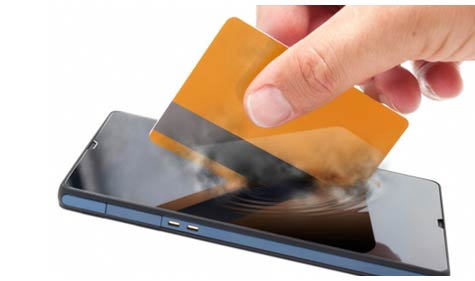Mobile payment systems have finally arrived after a long, drawn-out arrival.
Apple Pay officially got rolling on October 16. The honeymoon was short, however: Cult of Mac and other sites report that there is an uprising against the system. A competitive platform called Merchant Customer Exchange (MCX) has huge backers, including Walmart, Target, Best Buy, Lowes and a long list of other companies, including many other household names.
The story asks the question of why these companies don’t like Apple’s approach:
Because it doesn’t benefit them enough. Apple Pay is great for consumers, because it keeps your financial information private and makes shoppers harder to track. They also hate that Apple Pay still uses credit cards, which cost retailers between 1 percent and 5 percent on each transaction. They’ve created CurrentC as a way to cut out the middlemen by processing payments through Automatic Clearing Houses that charge lower rates.
The story adds that MCX said that it would exclusively use its payment platform, which is called CurrentC.
Reuters, in a story posted at CNBC, also covered the Apple Pay/MCX fight. MCX, the story says, is led by Wal-Mart Stores. The story echoes Cult of Mac’s assumption that cutting the credit card companies out of the equations is the ultimate goal. The story suggests that Apple has the advantage:
Many payment experts said they are skeptical that the retailer-backed system, known as CurrentC, can gain traction, let alone thwart Apple Pay, a payment system launched by the iPhone maker last week. CurrentC is set to go live in 2015.
It is unclear which platform or group of companies will win. In the big picture, however, it seems everyone in the category will be victorious. US Telecom reports on research from eMarketer and IDC, which paints a rosy picture for the category.
According to eMarketer, mobile payments will more or less double between last year and 2014. In 2013, the firm said, mobile payments accounted for $1.59 billion. That number will rise to $3.5 billion this year. The even more impressive number is IDC’s: The firm says that by 2017, mobile payments are expected to approach the $1 trillion mark.
Wired comments that the real early champion in the mobile payment realm is Starbucks. The company says that 16 percent of its domestic transactions are made in this way. That’s about 7 million per week. Nine percent of all mobile payments in 2013 were made at the store, and the total number of payments is growing at 50 percent annually. The lesson, perhaps, is that when it comes to mobile payments, forget about following the money; follow the coffee.
Carl Weinschenk covers telecom for IT Business Edge. He writes about wireless technology, disaster recovery/business continuity, cellular services, the Internet of Things, machine-to-machine communications and other emerging technologies and platforms. He also covers net neutrality and related regulatory issues. Weinschenk has written about the phone companies, cable operators and related companies for decades and is senior editor of Broadband Technology Report. He can be reached at [email protected] and via twitter at @DailyMusicBrk.




